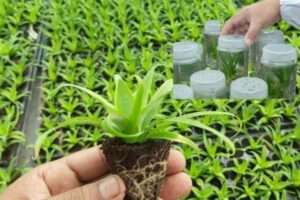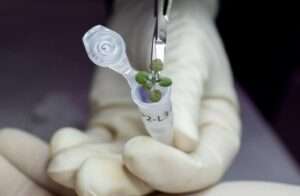
Dodder is the Parasitic plant which has no leaf and no root. Also, they don’t have chlorophyll for preparing food themselves by photosynthesis.
The only way for their living is to rely upon the host plants for required nutrition. For this, they insert haustoria (root-like structure) into the stem of the host.
Why called Vampire Plant
They are called the Vampire Plant because they attach themselves to the stem of the host plant. They also sucks the nutrients from the host plant, so the host plant becomes weaker.
Why is a dodder plant so special
The special (interesting) thing about the dodder plant is that it doesn’t produce its own food like other plants but instead feeds on the nutrients produced by the host plants.
How does dodder spread
The dodder plant generates a large number of dodder seeds in the spring and humans play a great role in the further dispersion of dodder speed.
The dodder spreads when the people shift the soil through any kind of equipment like tires or shoes.
What is the Scientific Name of the Dodder Plant
Cuscuta is the scientific name given to the dodder plant and Cuscuta is also commonly known as Dodder or Amarbel.
What is the family of Dodder Plant called
The dodder plant comes under the family of Convolvulaceae.
Where does dodder plant grow
Dodder plants like to grow in the places where there are hosts growing easily such as the temperate and tropical regions. These include:
- Landscapes
- Fields
- Agricultural crops
What is the life cycle of Dodder
At first, they germinate from the seed and find a host within 5 to 10 days, attach to the host’s stem and sucks the nutrients required for making an umbrella (canopy) structure to cast the host plant through tendrils.
What are the side effects of the dodder plant
There are several side effects if you eat dodder plants, it might cause stomach upset and diarrhea.
What are the medicinal uses of dodder plants
Used for various medicinal purposes-cure the following problems:
- Urinary tract
- Spleen
- Psychiatric
- Hepatic disorders
Only the part developed above the ground of the dodder is used for making medicine.
![Moon Jellyfish has [ Hidden Secrets ] You don't know moon jellyfish](https://spaceupper.com/wp-content/uploads/2022/11/1-1-300x169.jpg)










